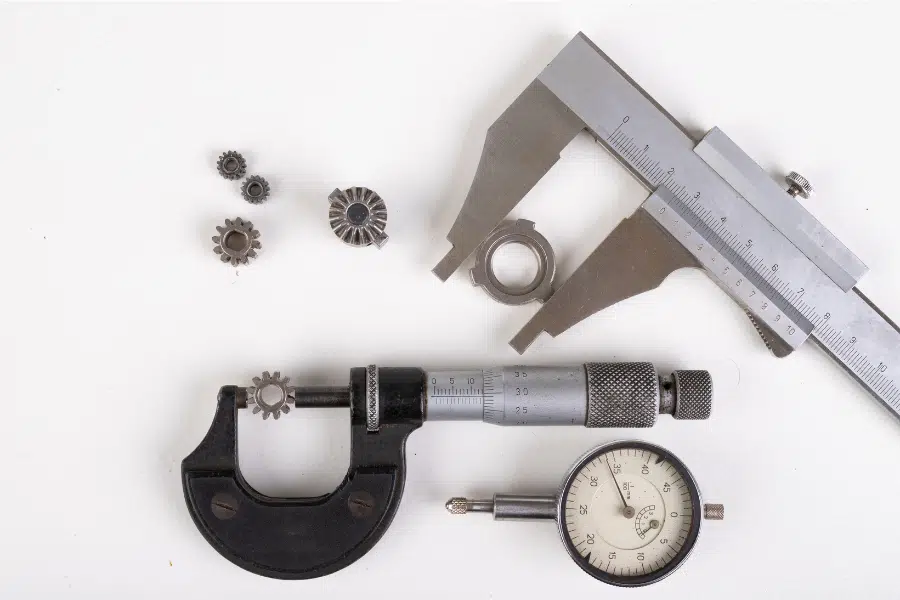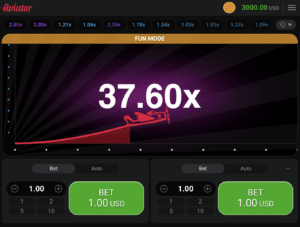Understanding Metrology: What is a CMM and How Does it Work?

Basic Understanding of Metrology and CMM/Shaped/tools/070inte.htm
What is Metrology?
Metrology is the science of measurement which involves variety of methods and instruments used to measure in great detail and with almost total reliability in different fields of activity. It is widely used in industries producing goods, in engineering and in all scientific research as the basis of accurate and consistent measurements.
Modern metrology can be considered as an essential tool that exists in every production process as part of wider manufacturing systems.
Today, metrology acts as one of the main support manufacturings processes, including process control, quality assurance and product verification. Organisations are able to maintain high industry standards and meet or not exceed regulatory standards coupled with producing products that meet customers’ specifications. The dimensional control give manufacturers an explicit way of measuring the accuracy, functionality, and reliability in products.
CMMs: ABrief Introduction
Coordinate Measuring Machines (CMMs) are considered as sophisticated metrology instruments used to measure physical geometrical properties of objects. These machines use sensors, probes, and software to acquire and process details on dimensions of some parts or products to generate considerable info on their nature.
CMMs offer numerous advantages in the field of metrology, including:
- Accuracy and Precision: CMMs can amount amounts of information concerning an object with a resolution of up to micro-level detail. These enable detailed information that can be compared with design requirements for use in quality assurance and enhancement of the process.
- Versatility and Flexibility: CMMs can be used to measure object of sizes limited by the measurement volume of the equipment down to micro sizes of objects that make up large structures. It can handle various geometries and different type of materials, so it becomes a useful tool in many discipline.
- Time and Cost Efficiency: CMMs cut significantly the time of inspection and measurement because the measurement process is automated. Such efficiency comes directly to bring improvement to costs and revenues for the companies or manufacturers.
CMMs have come to the market with many new features and functions and have changed the concept of metrology by helping manufacturers deliver products of the highest accuracy.
Different Categories of the Coordinate Measuring Machines
Bridge CMMs
There exists a popular kind of CMM known as bridge CMM in which the measurement probe hangs from the horizontal axis which forms the bridge. The structure in this design provides good rigidity and accuracy, which makes the bridge CMMs ideal for measurement in the accuracy range in different industries.
Gantry CMMs
CMMs of gantry design have a structure resembling a gantry crane, and measurement probe is placed on the cross beam that travels in the X direction. The overall structure of this design is highly stable, and it is possible to accept large and massive objects into it with high accuracy.
Portable CMMs
Carry CMMs, as implied in their name, are compact and versatile measurement instruments. They provide portable advantage for on- plant or off-plant measurements and helps to make measurements in powered environment or when the object cannot be transported to conventional CMM.
Horizontal Arm CMMs
The Horizontal Arm CMM has an arm devoted to the X-axis, with the measurement probe affixed to the end of the arm. This design permits controlled reach and access to otherwise; hard to reach surfaces, making them ideal in the measurement of geometries and surfaces.
CNC CMMs vs. Manual CMMs
CNC (Computer Numerical Control) CMMs are fully automated where the computer software initiates the measuring process. In manual CMMs, a measurement probe has to be moved to a particular point and measurements recorded by the operator directly. CNC CMMs are more precise, accurate, not time consuming and have less human interference while manual CMMs are flexible for special measurements.
Uses of CMMs in Metrology
Quality Control As an Element of Manufacturing Management
CMMs are extensively used in quality control procedures because they are used for dimensional inspection of parts on the shop floor in order to check the differences between the actual and the desired dimensions of a part. Product interpretation allows manufacturers to find problems that concern the quality of created products, eliminate scrap and prevent rework, guaranteeing stable production.
Aerospace & AutomotiveScaled Composites and McLaren electronics
Hence, the aerospace and automotive industries in particular, use CMMs as a tool for measuring complex parts and jigs. CMMs confirm accuracy for difficult-to-measure features on parts of engines and turbines, automobile assemblies, and other vehicle components that require specific application of safety concerns, dependable performance and standard procedures.
Reverse Engineering Using CMM
CMMs play a central role in reverse engineering where a physical item is probably scanned and modeled. Thus, CMMs interpret the geometric dimensions of physical objects for recreating CAD models designers use for modification, enhanced models, and even replication of outdated pars.
The Measurement of Complex Shapes and Areas
CMMs are particularly suited for capturing freeform surface, curved profiles and other forms of complex contours. As a result, they can describe intricate forms to analyze shapes which guarantee conformity and performance in diverse sectors such as medicine, molds and dies, and electronics.
As will be discussed and illustrated in the subsequent sections, the high capabilities and adaptability of the CMMs have indeed transformed the metrology industry and provided organizations with tremendous competence to realize unparalleled standards in their production processes.
Calibration as an Activity in CMM Operations
What is CMM Calibration?
Calibration of CMM is an essential procedure that determines the level of accuracy of a CMM during its measurement activities. It has been defined as the process of comparing the measurement information provided by the CMM to other standard reference points in an endeavour to determine discrepancies in the measurement.
Stages in Calibration Process
The calibration process typically involves the following steps:
- Establishing a Reference Standard: The method under consideration can utilize a traceable and highly accurate reference standard for calibration.
- Performing Measurements: The CMM gathers data of the reference standard in relation to its geometry as well as dimensions at various points.
- Analyzing Measurement Data: The measurement data that we have acquired next undergoes comparison using the known values of the reference standard.
- Adjusting and Recalibrating: If error between the CMM and the reference standards is detected, changes are made to the CMMs constant or part to improve its measurement to a more accurate configuration.
- Verification and Certification: After calibration, CMM is validated, and correctness is confirmed to meet the needed specifications. Finally, when the implements are calibrated, the results are recorded on the calibration certificate.
Advantages of Calibration
Regular calibration of CMMs offers several benefits, including:
- Accuracy and Reliability: Calibration is important to guarantee that the CMM makes proper and consistent measurement, keeping high quality and reducing deviation.
- Compliance with Standards: Calibrated CMMs work to international standards, legal expectations, and users’ needs, three factors that add to validity.
- Optimized Performance: Calibration process enable one to discover whether there are any problems as well as discrepancies within the measurement system to allow the proper functioning of the CMM.
- Cost Savings: Calibration specifically aims to correct measurement errors before they progress any further and become detrimental to a company in terms of rework, scrap, and time.
CMMs: A Comparison with Other Metrology Solutions
Innovative technologies have been introduced to overcome the drawback of conventional measurement systems and to obtain better results in terms of accuracy, reliability, and efficiency of measurement systems This paper aims at comparing the coordinate measuring machines (CMMs) and the optically measuring systems.
CMMs offer distinct advantages over optical measurement systems, including:
- Versatility: Compared with optical systems, CMMs can touch non-reflective surface fields with an intricately accurate measurement range on different geometries.
- Higher Measurement Accuracy: CMMs offer the advantage of producing more accurate measurements having less variability than other measuring systems especially in cases of PMI applications.
- 3D Measurement Capabilities: CMMs can capture data in three dimensions, the shape and features that are not possible to capture by other measuring tools.
CMM vs. Hand held gauges and Micrometers
CMMs offer significant advantages over traditional handheld gauges and micrometers, such as:
- Automated Measurement: CMMs can measure without the need to rely on an operator this may reduce error and increase throughput.
- Non-destructive Measurement: Within CMM part dimensions are captured non-contact manner an aspect that makes these devices ideal for measuring delicate and sensitive parts.
- Data Visualization and Analysis: They give accurate, detailed measurement data that is easily comparable and even in 3D format, which facilitates better understanding of the quality of the part produced.
Benefits of Employing a CMM Over All Ordinary Methods
Using a CMM offers several advantages over traditional measurement tools, including:
- Efficiency and Speed: CMMs allow for measuring several points on a part within a relatively short amount of time in comparison with other methods.
- Greater Measurement Coverage: CMMs are capable of taking readings in relation to the orientation of the object and is useful especially in surface modeling of complex geometry.
- Enhanced Data Reporting: All CMMs produce measurement reports and graphical outputs, thus aiding analysis, documentation and quality assurance tasks.
CMMs have current superior characteristics and many benefits; they have becoming the game-changing solution in the area of metrology and are providing the industries with the highest level of accuracy, efficiency and quality in the produced parts.
Conclusion
Therefore, CMMs have transformed the metrology based on the advantages that are associated with improved capabilities. When implemented, CMMs provide unparalleled precision, time, and quality in processes involved in manufacturing. The use of CMMs provides time advantage over manual tools since they are much faster at measurement than the traditional measuring tools while having increased coverage enables full characterization of intricately shaped parts. Furthermore, CMMs also give improved data reporting capacity through measurement report details and visualization that support analysis, documentation, and quality assurance.







